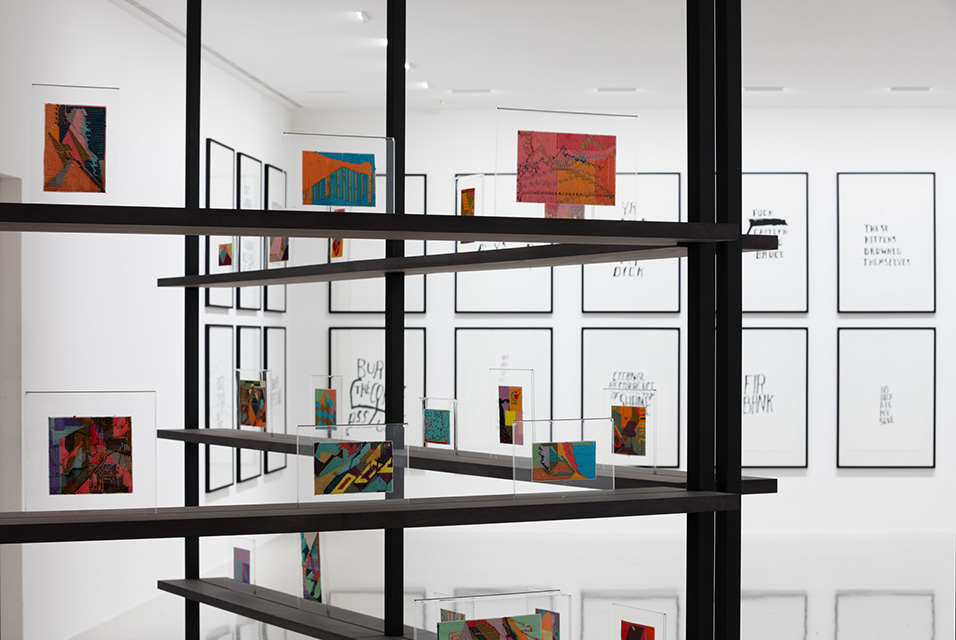mumok opens an exhibition of works by Steve Reinke

Artdaily_VIENNA.- “My work wants me dead, I know. It is all it ever talks about,” writes Steve Reinke in a correspondence on the occasion of his exhibition at mumok. Death and life, empathy and cruelty, sex and intimacy—but also the uneasy relationship between the author and his work—are the kind of topics that Reinke (born 1963 in Eganville, Canada; lives in Chicago, USA) engages with in his work. In the best Nietzschean manner, however, he considers human beings not political or moral entities but puppets of microbiotic agendas: instead of the Freudian ego and id, it is bacteria, placentae, and plankton that rule the world in his more recent videos, and “culture” designates not humanistic achievement but life in a petri dish. Butter, Reinke’s first ever solo museum show, presents his new video, An Arrow Pointing to a Hole, as well as a selection of his sinister text images and absentminded needlepoints, all of which, in a paradoxically precise manner, tell stories of loss of control, formlessness, and self-abandon.
As an artist and writer, Reinke is best known for his monologue-based videos, among them The Hundred Videos (1989–1996), which he programmatically conceived as an “early work.” In these five hours of video material, Reinke, by furnishing found, filmed, and animated images with confessional comments, blurs the boundary between documentary and fiction, thus anticipating the narcissistic structure of our current social media landscape. In 2006, Reinke started a new cycle titled Final Thoughts, to which the work presented at mumok also belongs and which will be concluded at the time of the artist’s death. Whereas questions of libido and eros—that is, life-affirming principles—were often central in earlier works, Final Thoughts is dedicated to their antagonists. Reinke is considering the end of things—of language, consciousness, and experience—and thus of his own person. In the nocturnal monologue scene in An Arrow Pointing to a Hole the artist is physically omnipresent—as a face, sonorous voice, and tattooed body—but the existence of a realm beyond this naked manifestation is categorically called into question. He had already lost his subconscious as a boy, as the narrator wants us to believe, and since then the chorus of his microbiome has been doing the talking: “My guts ... my guts were humming. They have been humming ever since, and I mostly do whatever they say.” Has the prophecy come true? Is Reinke, the subject, dead? Hard to say. What is very much alive is his quest for the dissolution of the grammatical fiction of the “I”—for forms without structure, without a face, without perspective.
Both Reinke’s text images and his needlepoints reify such yearning for a loss of form. Grounded in the practice of notetaking and doodling, they are images that refuse to be images, strange hybrids of precise execution and nebulous contents. The drawings of words and phrases on which the series of silkscreen prints Portfolio A, B, C, D (2016–2019) is based, for example, are made with ink dripping from an eyedropper. The line is hard to control—painting rather than writing—and lends phrases such as “Amoeba Navigates Labyrinth” or “Strong Corpse Weak Ghost” an erratic expression. The needlepoint embroideries Reinke has been making for about ten years are similarly contradictory objects—“really slow, crafty doodles,” as the artist writes. Reinke produces them without either plan or intention: one color follows another; patterns emerge and are abandoned. The result is strangely innocent, quasi-abstract objects, their back as important as their front, whose only function is to indicate killed time.
In conjunction with this exhibition, the first monograph on Steve Reinke’s work in the German-speaking world has been published. It is also the first publication that looks at the artist’s text images and needlepoints in addition to his video works. Along with a preface by the curator, the book features texts by Laura U. Marks, Jaakko Pallasvuo, Kerstin Stakemeier, Samo Tomšič, and Reinke himself.
